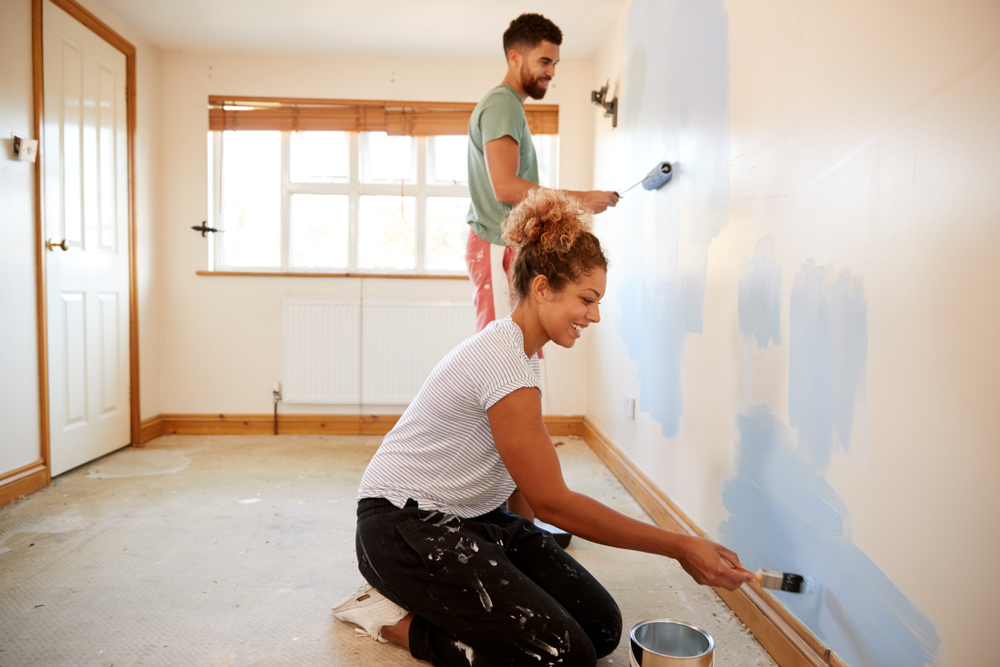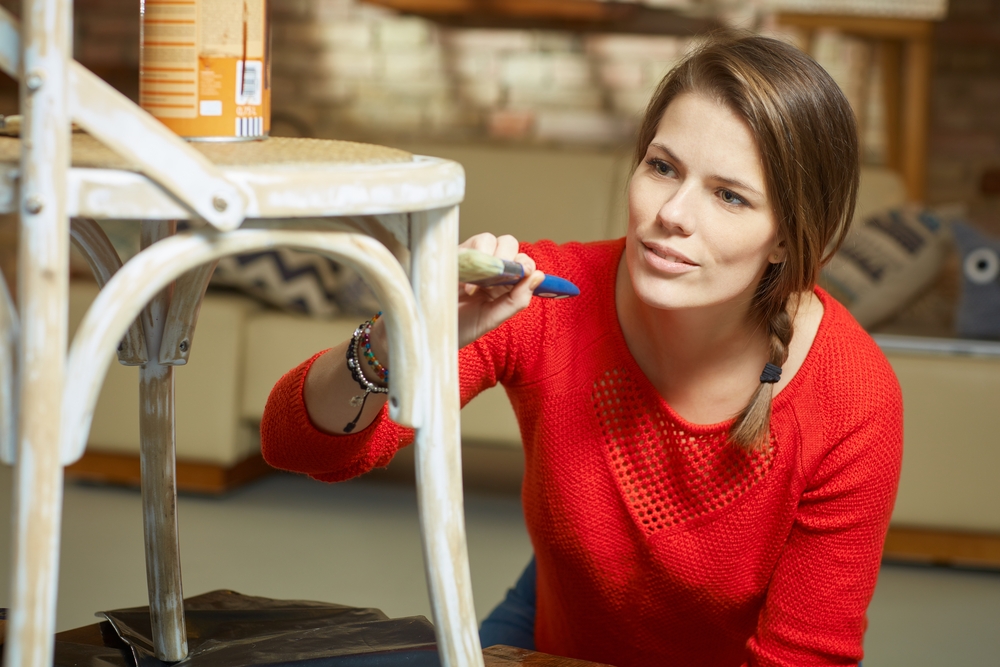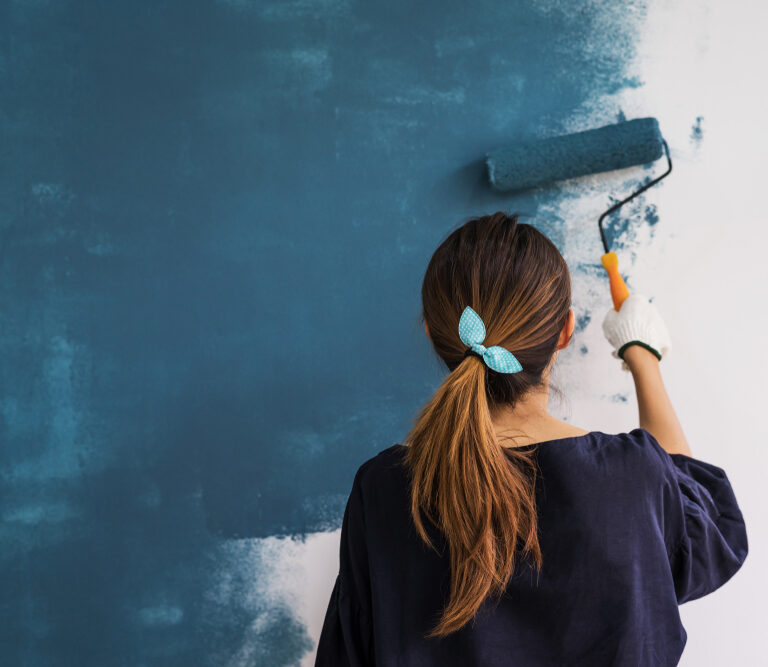Whether refinishing a piece of furniture or brightening a dreary room, you’re probably eager to let the whole family enjoy your handiwork. Before everyone can use that upgraded coffee table, though, or hang artwork in the newly painted room, you’ll have to wait for the products you applied to both dry and cure.
What’s the Difference Between Drying & Curing?
Although often used interchangeably, dry and cure refer to two different processes when it comes to paint. Paint is considered dry when enough of its solvents have evaporated that it doesn’t leave residue behind when touched. It has cured, on the other hand, once all the solvents have evaporated, thereby reaching maximum hardness.
Naturally, curing takes significantly longer than drying. Whereas most paint needs between one and eight hours to dry, curing can take days, if not weeks.
When planning a painting project, you must account for both drying time and curing time. For projects that demand multiple coats, it’s imperative that you wait until each coat has dried before applying the next. And until the final coat has cured, you don’t want to do anything that might leave behind imperfections.
Paint that hasn’t cured might be dry to the touch, but it’s still tacky. That means it’s vulnerable to nicks and indentations with even the slightest pressure.

What Factors Affect Dry Time?
Learning paint can take anywhere from one to eight hours to dry isn’t very helpful, especially if you’re trying to determine a precise timeline for your next project. There’s a reason why this range is so large, though. Dry time is influenced by a number of variables, which you can learn about below.
Formula
While every manufacturer uses different additives, thereby producing all kinds of unique formulas, there are just two main types of paint for residential projects: oil-based and latex-based. Because of their specific compositions, the kind of paint you end up using will have an impact on the total drying time.
Oil-Based Paint
Generally speaking, oil-based paints take longer than latex-based paints to dry. Even when applied thinly, each coat can take up to eight hours to become dry to the touch. Most manufacturers advise consumers to wait a whole 24 hours, however, before applying the next coat to prevent streaks, pulls, and other imperfections caused by pressure from the roller or brush.
Latex-Based Paint
Latex-based paint is the more popular choice for residential projects because you can apply multiple coats a day with ease. When applied properly—in a thin, even coat—it’s dry to the touch within about an hour. You should wait about four hours, though, before applying the next coat to ensure a smooth finish.
Temperature
The lower the temperature is, the longer paint takes to dry. While some manufacturers boast formulas that can withstand extreme temperatures for exterior projects, it’s unadvisable to apply paint when it’s lower than 50 degrees Fahrenheit. What’s more, the temperature should remain above 32 degrees Fahrenheit for several days afterward to facilitate drying.
Humidity
The solvents in paint cannot evaporate if there’s too much moisture in the air. If you’re working on an exterior project, you should wait until the humidity level drops to 50% or lower—and will remain there for several days—before getting started.
While paint can still dry when the humidity is as high as 70%, it will take significantly longer. And the longer paint takes to dry, the more opportunities there will be for imperfections to develop.
If you’ll be painting inside your home, moisture will have less of an impact. Should you live in an especially humid climate, though, you’ll still want to monitor the weather. And if you live in a dry climate but use a whole-home humidifier, consider turning it off until the project is complete.
Ventilation
Air circulation speeds up the evaporation process, so the more ventilated the space is, the faster the paint will dry. When working inside, open windows and turn on fans to facilitate circulation. (This will also keep the fumes at bay while you work!)
Is There a Formula for Determining How Long Paint Takes to Dry?
When you consider all the factors that can affect drying time, it’s natural to develop paralysis by analysis. If this information has been more confusing than illuminating, don’t worry; there’s an easy to way to get at least a rough estimate for the total drying time. Simply review the manufacturer’s instructions, which should be written on the can.
Every product should have a note stating how long you must wait between coats. Since this number is a general figure that doesn’t account for the kinds of factors mentioned above, though, you may need to adjust it.
Generally speaking, it’s best to wait at least as long as the manufacturer recommends, even if you live in an especially warm and dry climate, like Nevada. And if you live in an area that’s colder or more humid, you’ll want to wait a few hours longer than the manufacturer recommends before applying each new coat.

What Factors Affect Cure Time?
The same factors that influence dry time will also affect cure time. In other words, paint takes longer to cure in climates that are colder or more humid. It also takes longer to cure when ventilation is poor.
Thankfully, manufacturers should state the average cure time in their instructions, as well. You can use this as a rough starting point, and then simply add more time as needed based on the factors mentioned above.
Many consumers are surprised to learn that dry time doesn’t actually correspond to cure time. In fact, while oil-based paint takes longer to dry, it cures in a matter of days. Latex-based paint, on the other hand, might dry within a few hours, but it can take several weeks to cure.
Once you think the paint has cured, it’s wise to perform a simple test to confirm as much. Find an inconspicuous area, like the bottom-most corner, and gently press your fingernail against the surface. If it starts to leave an indentation, stop immediately, and wait at least 24 hours before trying again. If, on the other hand, the surface remains smooth, the paint has cured.
If it’s a piece of furniture that you painted, you can use it with confidence once it’s cured. If it’s a wall, you can start hanging artwork. You can also allow your family to go back to using the room as normal without fear of them nicking the paint.
How Can I Speed up the Drying & Curing Times?
If you’re eager to finish your painting project as quickly as possible, there are steps you can take to speed up the drying and curing times. Examples include:
- Opting for a latex-based formula
- Applying the paint thinly and evenly using high-quality brushes and rollers
- Opening windows, turning on ceiling fans, and/or setting up box fans to facilitate ventilation if the project is indoors
- Waiting for optimal weather conditions to get started (a higher temperature with a lower humidity level)
A Final Coat
Knowing the kinds of factors that influence painting and curing times will allow you to plan every project with ease. After reviewing the manufacturer’s instructions, you can adjust them based on these variables so you have a rough duration for each stage of the job. This, in turn, will allow you to tackle all kinds of DIY painting projects around the house with confidence.
